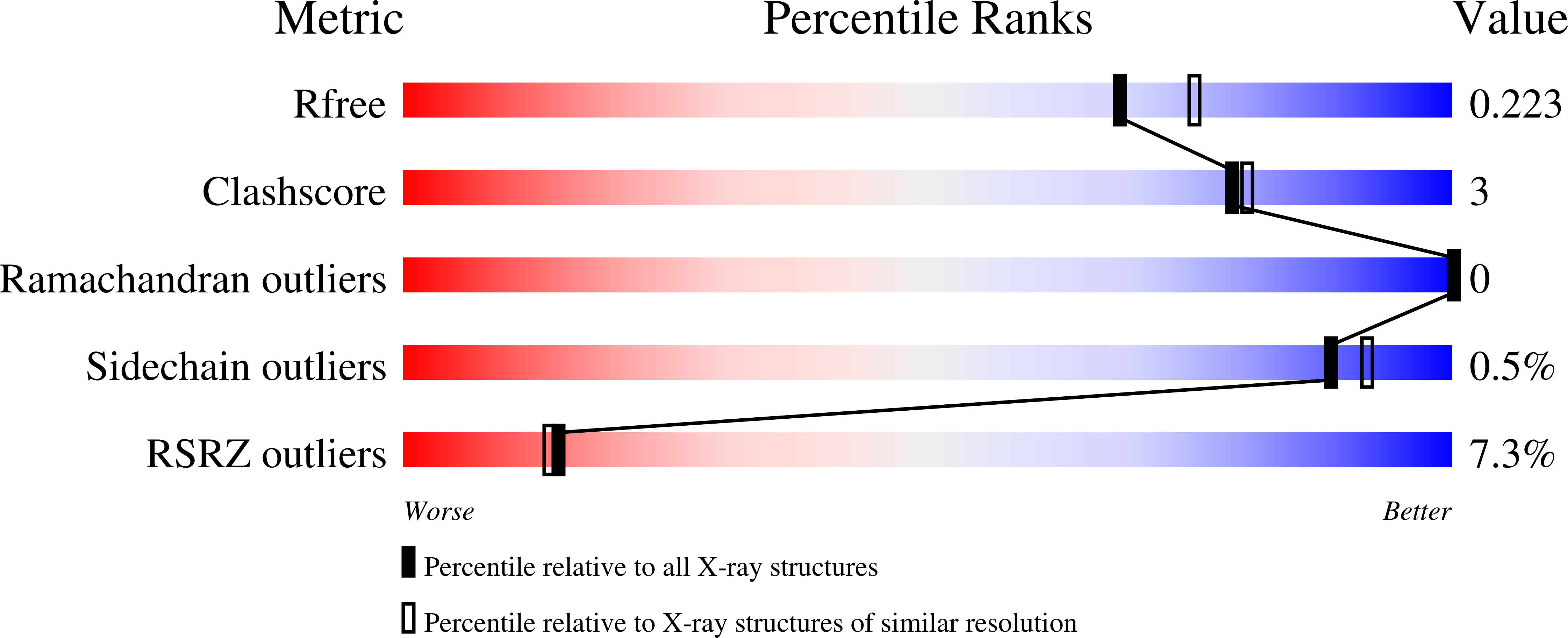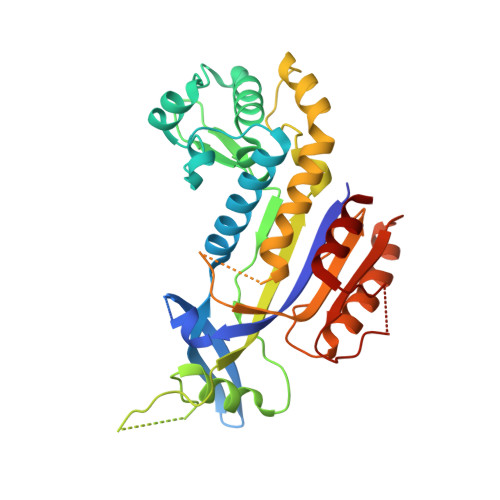Structural and functional characterization of an archaeal clustered regularly interspaced short palindromic repeat (CRISPR)-associated complex for antiviral defense (CASCADE).
Lintner, N.G., Kerou, M., Brumfield, S.K., Graham, S., Liu, H., Naismith, J.H., Sdano, M., Peng, N., She, Q., Copie, V., Young, M.J., White, M.F., Lawrence, C.M.(2011) J Biol Chem 286: 21643-21656
- PubMed: 21507944
- DOI: https://doi.org/10.1074/jbc.M111.238485
- Primary Citation of Related Structures:
3PS0 - PubMed Abstract:
In response to viral infection, many prokaryotes incorporate fragments of virus-derived DNA into loci called clustered regularly interspaced short palindromic repeats (CRISPRs). The loci are then transcribed, and the processed CRISPR transcripts are used to target invading viral DNA and RNA. The Escherichia coli "CRISPR-associated complex for antiviral defense" (CASCADE) is central in targeting invading DNA. Here we report the structural and functional characterization of an archaeal CASCADE (aCASCADE) from Sulfolobus solfataricus. Tagged Csa2 (Cas7) expressed in S. solfataricus co-purifies with Cas5a-, Cas6-, Csa5-, and Cas6-processed CRISPR-RNA (crRNA). Csa2, the dominant protein in aCASCADE, forms a stable complex with Cas5a. Transmission electron microscopy reveals a helical complex of variable length, perhaps due to substoichiometric amounts of other CASCADE components. A recombinant Csa2-Cas5a complex is sufficient to bind crRNA and complementary ssDNA. The structure of Csa2 reveals a crescent-shaped structure unexpectedly composed of a modified RNA-recognition motif and two additional domains present as insertions in the RNA-recognition motif. Conserved residues indicate potential crRNA- and target DNA-binding sites, and the H160A variant shows significantly reduced affinity for crRNA. We propose a general subunit architecture for CASCADE in other bacteria and Archaea.
Organizational Affiliation:
Thermal Biology Institute, Montana State University, Bozeman, Montana 59717, USA.














